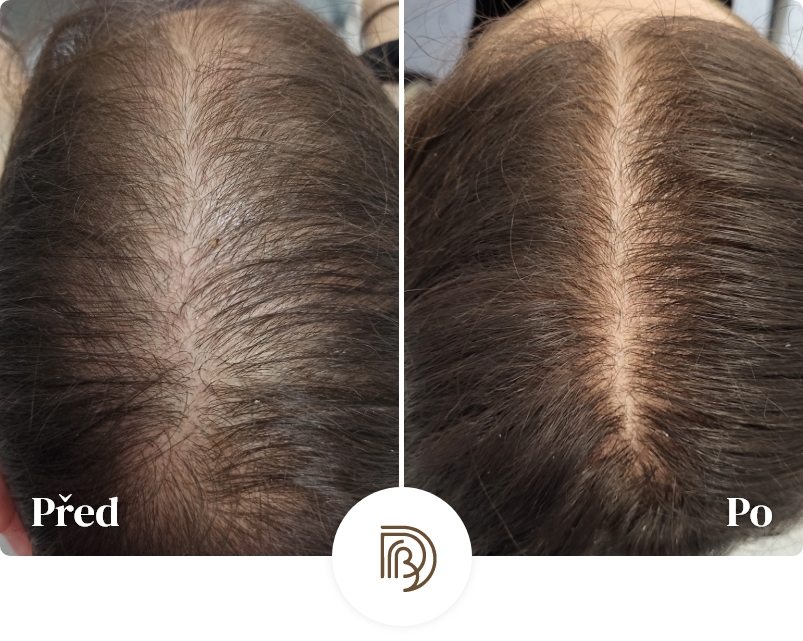
Androgenetic alopecia, female, 24 years old
The patient was diagnosed with Androgenetic Alopecia.
The patient started to notice the first signs of hair loss and thinning at the age of 14. Since then, she has used commonly available dietary supplements, hair loss shampoos and hair serums, but without much effect.
At the first consultation, we discussed treatment options and set up a treatment plan consisting of a combination of topical and oral prescription medications.
The patient had a total of 3 visits at my clinic within the first year of treatment. Currently, check-ups are recommended every 9-12 months.
Here we see an excellent result after only one year of treatment.
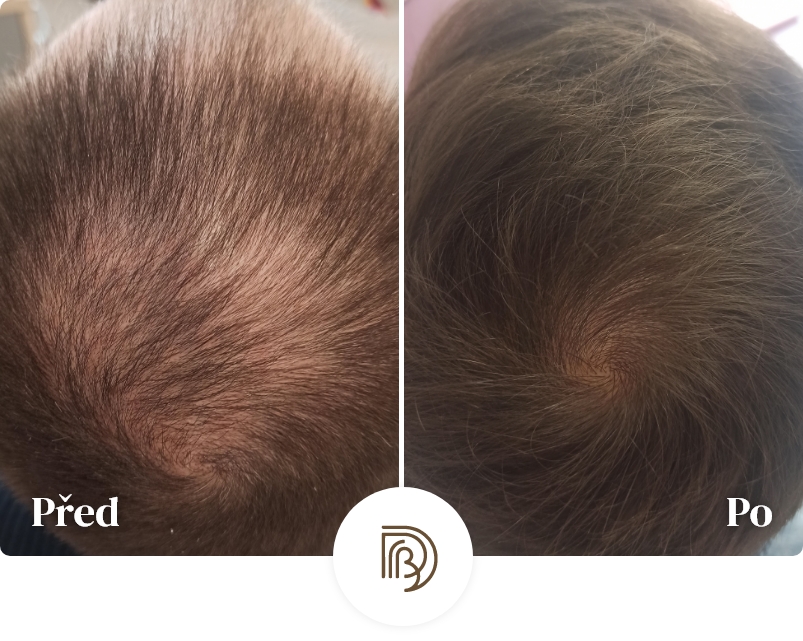
Androgenic alopecia, male, 32 years old
The patient was diagnosed with Androgenetic Alopecia.
This patient originally came to me for a consultation with questions about hair transplants. After we discussed in detail the options to resolve the hair loss problem, the patient decided to try conventional treatment first. We put together a plan that consisted of a combination of topical and oral prescription medications and Plasmatherapy to boost the results.
The patient achieved extraordinary results after only 6 months of treatment. Unfortunately, he stopped following the treatment protocol and subsequently his condition deteriorated again. At the next consultation, we discussed the treatment plan again and adjusted it to better suit this patient’s needs and habits.
This adjustment helped and here is the result of the treatment after 15 months.
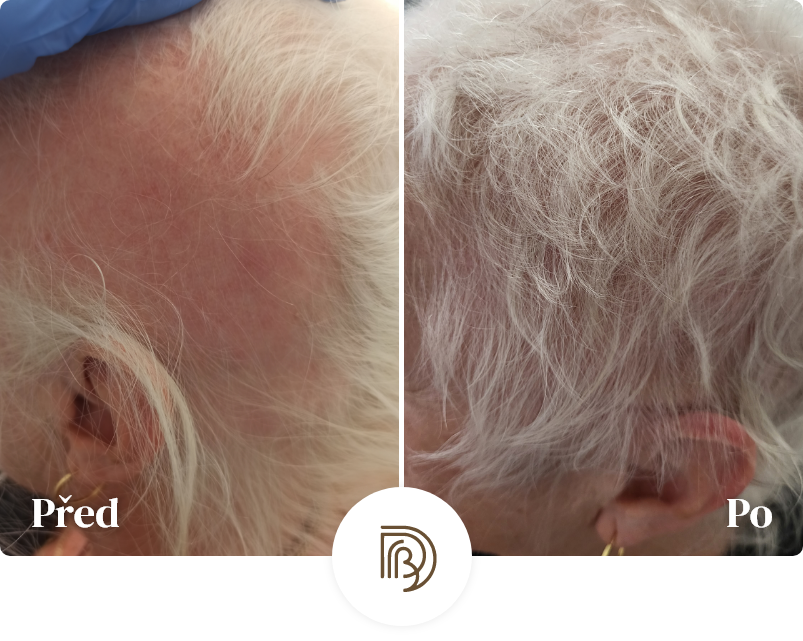
Alopecia Areata, female, 68 years old
The patient was diagnosed with Alopecia Areata.
At the first consultation the diagnosis was confirmed by trichoscopic examination. We discussed treatment options with the patient and prepared a treatment plan consisting of a combination of topical and oral prescription medications.
Unfortunately, after 6 weeks the disease developed into Alopecia Areata Totalis and the patient lost almost all her hair from her scalp in a short time. This circumstance forced us to change the established treatment plan to respond to the current progression of the disease.
There was excellent cooperation with the patient as she followed the prescribed treatment flawlessly, including visits at my clinic every 6 weeks. Six months after starting the treatment, a great improvement in her condition was evident, which you can see in the photo. For this reason, we decided to adjust the prescribed medication and gradually taper off the treatment. At present, neither the medication nor further consultations are needed.
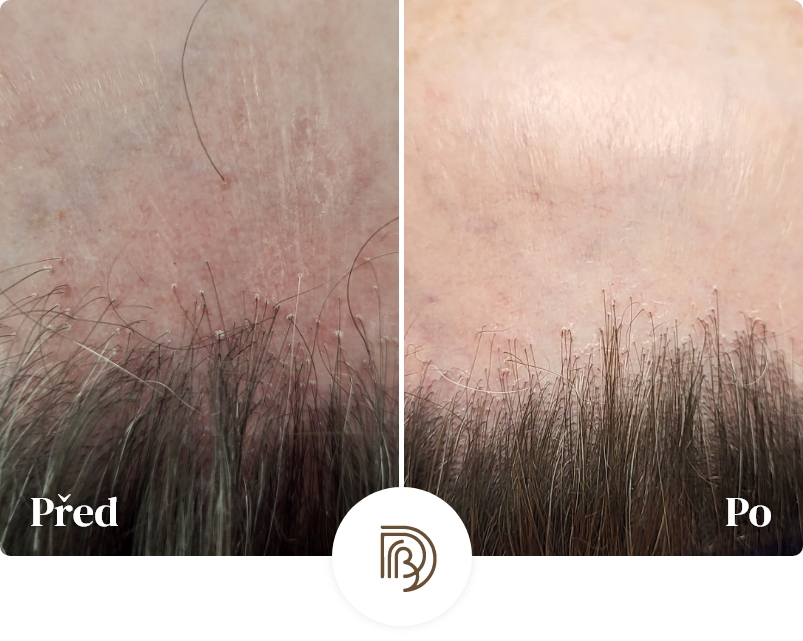
Frontal Fibrosing Alopecia, female, 70 years old
The patient was diagnosed with scarring alopecia specifically Frontal Fibrosing Alopecia. In this type of disease, hair loss in the affected areas is irreversible and the purpose of treatment is to prevent the disease from spreading.
At the first consultation, the diagnosis was confirmed by trichoscopic examination. We discussed the treatment options and set up a treatment plan that was aimed to suppress the scalp inflammation and prevent further hair loss. This plan consisted of a combination of topical and oral prescription medications and corticosteroid injections.
The patient attended check-ups every six weeks. After 9 months of treatment, the inflammation completely subsided and we were able to prevent the spread of the disease to the previously unaffected part of the scalp. Currently, the patient attends check-ups every 6 to 12 months.
In the comparison photos you can see that the hairline has remained the same since the treatment was applied.
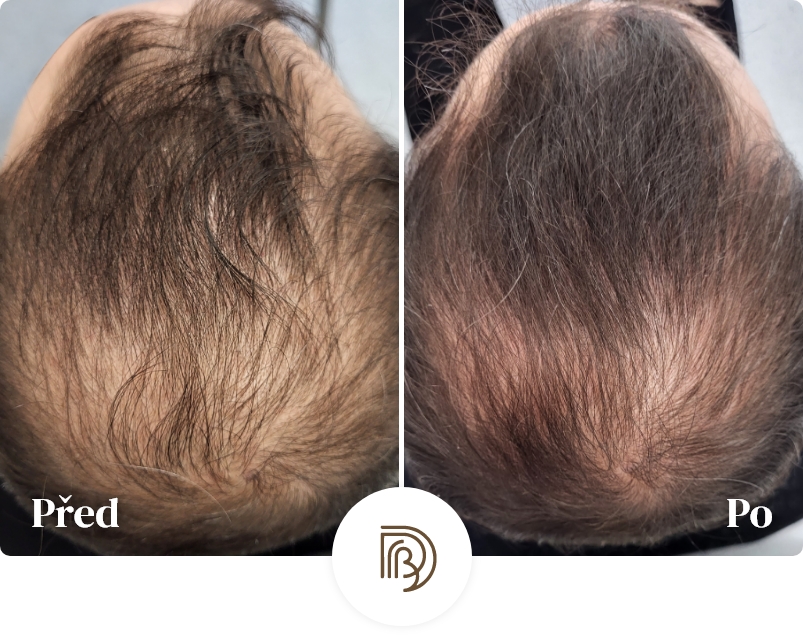
Androgenic alopecia, male, 33 years old
One of my favorite stories is related to this patient.
The patient confused my clinic with another one he regularly visited. He scheduled a consultation, and at the beginning, he told me that he came to buy a shampoo and a solution to support hair growth, which we don’t sell, and that he had been to our clinic several times before. After a moment of clarifying the situation and a good laugh, we agreed that he would try replacing the shampoos with medical treatment.
We discussed treatment options with the patient and agreed on a treatment plan, which consisted of a combination of prescription oral medications.
Pacinet was great to work with and here is the result after 3 consultations and 7 months of treatment.

Telogen Effluvium, female, 42 years old
The patient was diagnosed with Androgenetic Alopecia in combination with Telogen Effluvium.
At the initial consultation, the patient complained of skin burning in addition to thinning hair, and the result of the trichoscopic examination was also substandard. Therefore, a biopsy of the scalp had to be performed and a sample sent for histological examination. Fortunately, this ruled out the possibility of scarring alopecia.
We discussed treatment options with the patient and prepared a treatment plan. Since the patient wanted results as soon as possible, a combination of oral prescription medications combined with plasmatherapy was used to treat her hair loss. A combination of oral and topical medications was deployed to combat the burning sensation on the scalp.
The first results of the treatment could be observed after a few months and the condition continued to gradually improve. After 18 months from the start of the hair treatment, complete hair regeneration was achieved. As the patient suffers from regular seasonal hair loss, she has been attending plasmatherapy every 3 months.
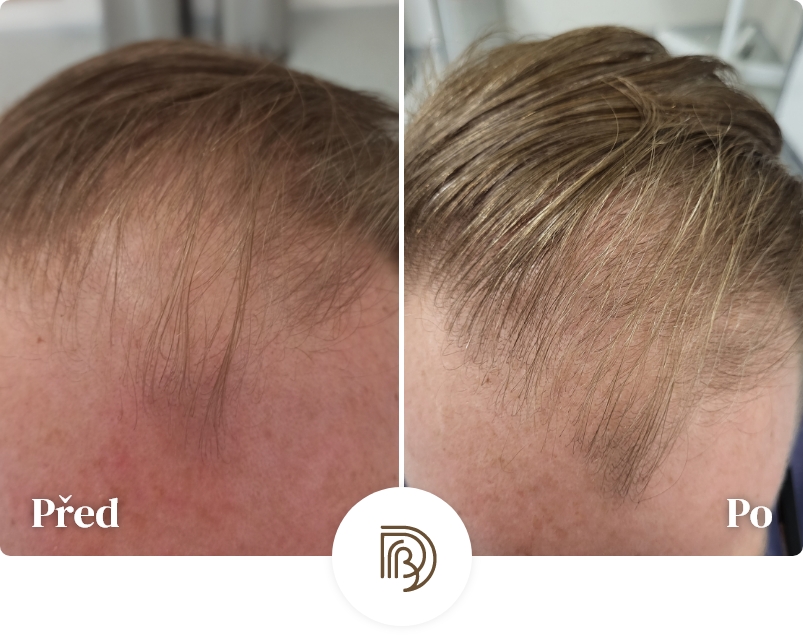
Androgenic alopecia, male, 46 years old
The patient was diagnosed with Androgenetic Alopecia.
At the first consultation, we discussed treatment options and set up a treatment plan consisting only of oral prescription medications. The patient attended regular check-ups every 3 months, where we adjusted the dosage of the medication several times to better suit the patient.
After 11 months of treatment, there is a very clear result in the hairline area. The patient continues treatment and attends check-ups every 9-12 months.
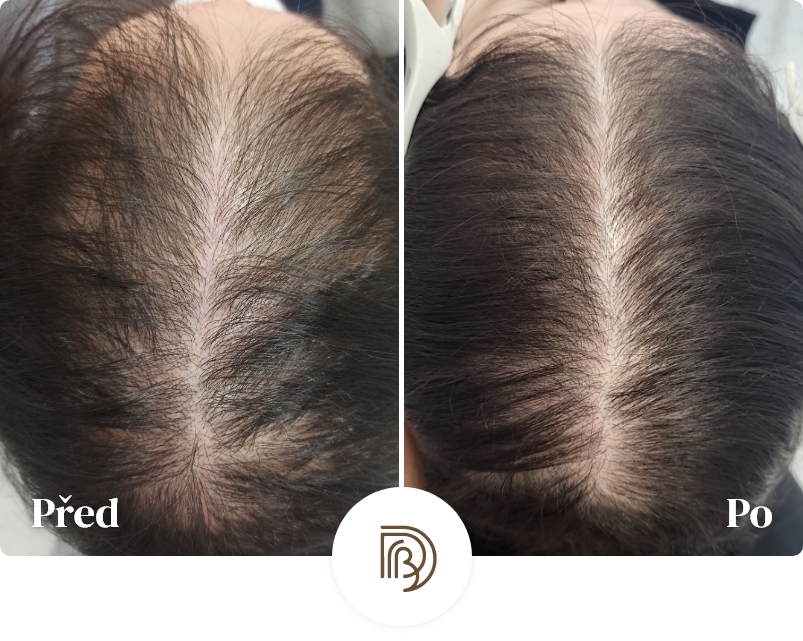
Androgenetic alopecia, female, 27 years old
The patient began to notice hair loss and thinning around her twentieth birthday. Over the past six years, she had tried a plethora of over-the-counter shampoos, dietary supplements, hair serums, various skin cleansers and laser treatments, unfortunately with zero effect.
We discussed treatment options with the patient and created a treatment plan consisting of oral prescription medications. At follow-up consultations over the next 15 months, we adjusted the dosage of medications with the patient.
Here you see the excellent result of a wonderfully cooperative patient after 15 months.
